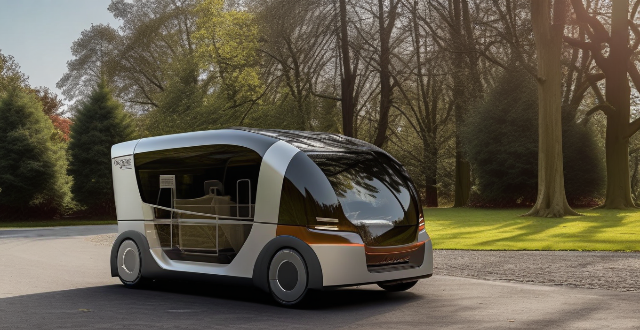A Series Hybrid Electric Vehicle (SHEV) is a type of hybrid vehicle that uses an internal combustion engine and an electric motor to power the wheels. The engine generates electricity to charge the battery pack or provide power to the electric motor, which then drives the wheels. Some SHEVs have regenerative braking systems that capture energy during braking and use it to recharge the battery pack. Advantages of a SHEV include improved fuel economy, reduced emissions, increased torque, and quiet operation. Disadvantages include complexity, weight, limited range, and higher cost.

What is a Series Hybrid Electric Vehicle (SHEV)?
A Series Hybrid Electric Vehicle (SHEV) is a type of hybrid vehicle that utilizes both an internal combustion engine and an electric motor to power the wheels. In a SHEV, the internal combustion engine is not directly connected to the drivetrain, but instead generates electricity to charge the vehicle's battery pack or provide power to the electric motor. The electric motor then drives the wheels, either alone or in combination with the internal combustion engine.
Key Features of a Series Hybrid Electric Vehicle:
- Separate Power Sources: The internal combustion engine and electric motor are separate from each other, allowing for more flexibility in their operation.
- Electric Motor Drive: The electric motor is responsible for driving the wheels, while the internal combustion engine acts as a generator to produce electricity.
- Regenerative Braking: Some SHEVs have regenerative braking systems that capture energy during braking and use it to recharge the battery pack.
- Battery Pack: A large battery pack stores energy generated by the internal combustion engine and/or regenerative braking system.
- Fuel Efficiency: SHEVs can achieve higher fuel efficiency than traditional gasoline-powered vehicles since they rely on the electric motor for most of their power needs.
Advantages of a Series Hybrid Electric Vehicle:
- Improved Fuel Economy: By using both an electric motor and an internal combustion engine, SHEVs can achieve better fuel economy than conventional vehicles.
- Reduced Emissions: Since the internal combustion engine operates at a constant speed, emissions are reduced compared to traditional vehicles.
- Increased Torque: Electric motors provide instant torque, which results in improved acceleration and performance.
- Quiet Operation: The absence of direct mechanical linkage between the engine and wheels makes SHEVs quieter than traditional vehicles.
Disadvantages of a Series Hybrid Electric Vehicle:
- Complexity: The addition of an electric motor and battery pack increases the complexity of the vehicle, potentially leading to higher repair costs.
- Weight: The extra components required for a SHEV can add weight to the vehicle, affecting its handling and performance.
- Limited Range: Depending on the size of the battery pack, SHEVs may have limited range when running solely on electric power.
- Higher Cost: Due to the additional technology required, SHEVs generally have higher upfront costs compared to traditional vehicles.
In conclusion, a Series Hybrid Electric Vehicle (SHEV) combines the benefits of an internal combustion engine with those of an electric motor to provide improved fuel economy, reduced emissions, and enhanced performance. While there are some disadvantages associated with this type of vehicle, such as increased complexity and cost, many people find that these benefits outweigh the drawbacks.